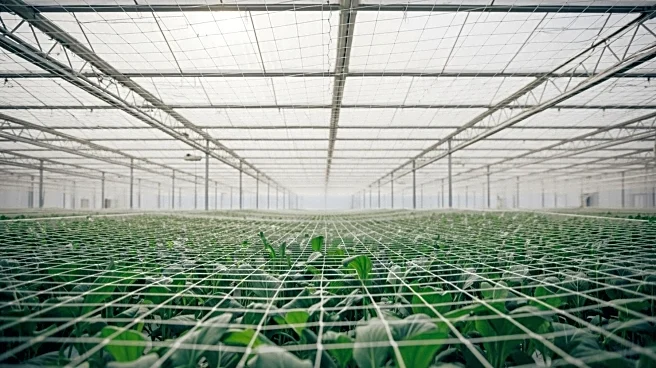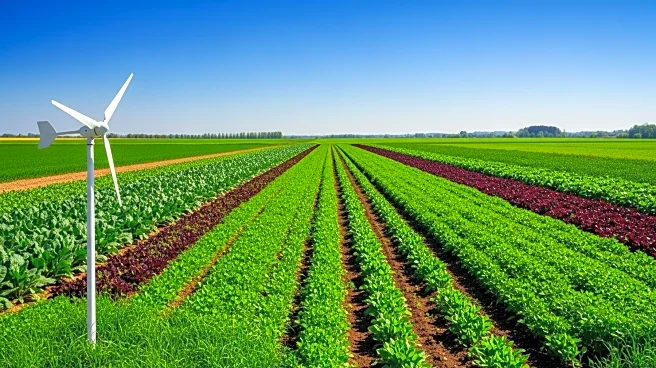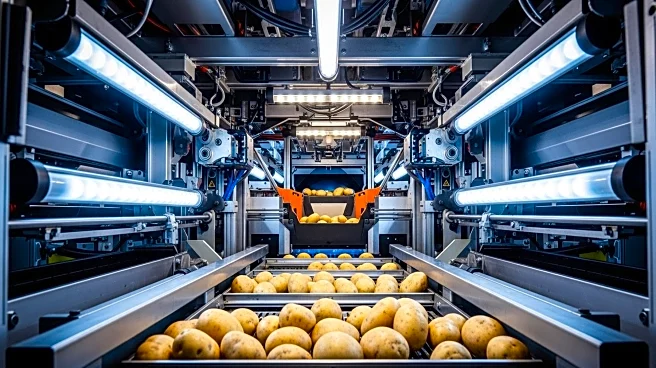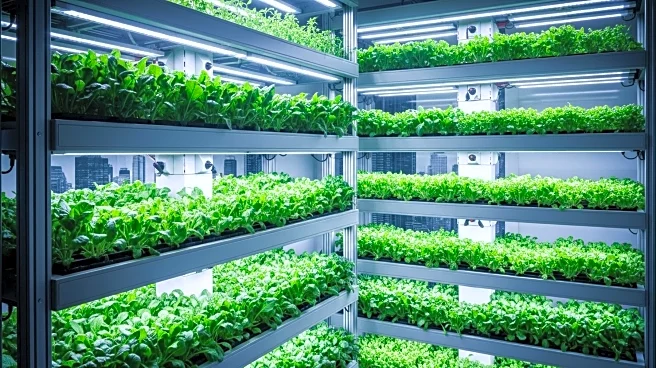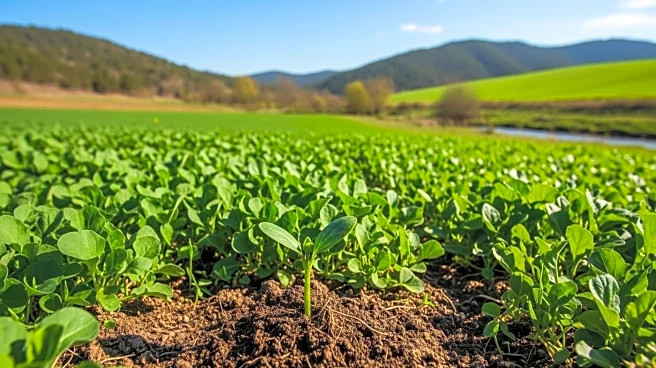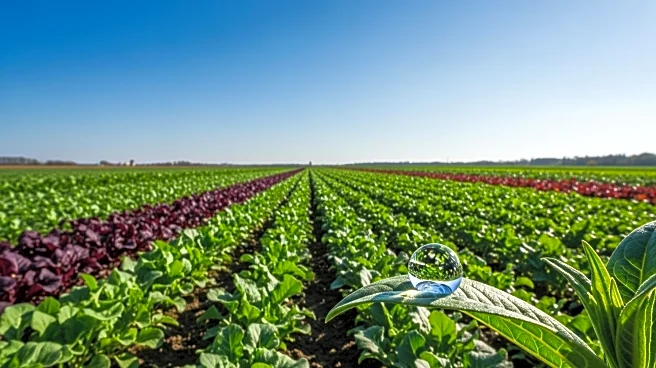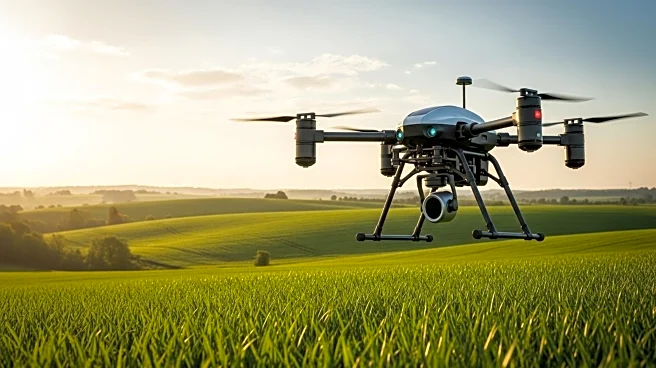What's Happening?
The global agriculture nets market is anticipated to grow significantly, reaching USD 17.9 billion by 2034 from USD 10.6 billion in 2024, with a compound annual growth rate (CAGR) of 5.4%. This growth is driven by the increasing need for crop protection against unpredictable weather conditions such as hailstorms, which pose a serious risk to agriculture. Anti-hail nets are highlighted as effective solutions, providing a barrier that absorbs and deflects hailstones, thus preventing direct damage to crops. Additionally, agro shade nets are designed with varying shade factors to cater to different crop needs, offering protection from excessive sunlight and maintaining optimal growing conditions. The market is also seeing a rise in demand for organic and sustainably grown produce, aligning with the use of nets to reduce reliance on chemical pesticides.
Why It's Important?
The expansion of the agriculture nets market is crucial for enhancing crop protection and ensuring stable productivity in the face of climate change. These nets offer farmers a cost-effective way to safeguard crops from harsh weather, pests, and UV radiation, thereby supporting sustainable farming practices. The growing consumer demand for organic produce further underscores the importance of these nets, as they help reduce chemical pesticide use. However, the high upfront costs for quality nets can be a barrier for smallholder farmers, potentially limiting market growth. The regulatory environment also adds complexity, with strict compliance standards for materials and environmental impact potentially slowing product approvals.
What's Next?
The agriculture nets market is expected to continue its growth trajectory, driven by increasing adoption of sustainable farming practices and government subsidies for protective farming equipment. As climate change continues to impact weather patterns, the demand for nets that provide protection against extreme conditions is likely to rise. Additionally, innovations in biodegradable and bio-based nets are emerging, addressing environmental concerns associated with plastic waste. These developments could further boost market growth and adoption among farmers seeking eco-friendly solutions.
Beyond the Headlines
The shift towards biodegradable and bio-based nets represents a significant trend in the agriculture nets market, addressing the environmental impact of plastic waste. This innovation is supported by global food organizations advocating for sustainable agricultural practices. The Asia-Pacific region, with its extensive agricultural base and modern farming adoption, is leading the market, highlighting the strategic role of nets in enhancing food security and crop resilience.
